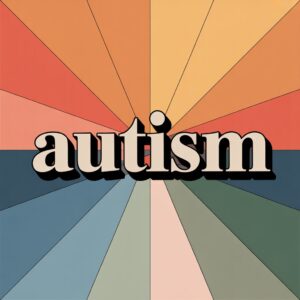Recognising Early Signs of Autism in Children
Because autism presents uniquely in each person, it can be challenging to identify. This is why we compiled a few signs or behaviours that we hope might be helpful for you.
If you are are a parent, please note that the signs we listed in babies might continue in the following age groups. But, it is important to remember that every child develops at their own pace.
Autism signs in Babies
In some cases, autism can be identified in babies (0-2years old). These are a few signs that can help you identify if your child needs an assessment.
Social and Communication
- “Ignoring” you if you are calling their name.
- Ignoring sounds or fuzzing/crying with certain sounds i.e. vacuum, hair dryer, rain.
- Not copying behaviours of people around them. i.e. waving bye bye.
- Not understand simple instructions (1 -2 year old) i.e. “Give me the car”.
- Not liking pretend play. i.e. Feeding a baby doll.
Behaviour
- Not interested in you, or family or even other babies.
- Not interested in pretend play.
- Not initiating interactions i.e. looking at you when they want your attention.
- Having an unusual interest in certain things. i.e. exclusively playing with cars, or animals.
- Very unsettled when their routine is changed.
- Body movements like flapping hands, walking on toes.
- Lining toys.
Autism signs in Preschoolers
The signs observed in babies also apply to preschoolers. Some preschoolers can show other behaviours that make autism more noticeable.
Social and Communication
- Not talking.
- Speaking on volume that doesn’t match the situation.
Behaviour
- Running away (Eloping).
- Seeking dangerous activities. i.e. head-banging, climbing furniture.
- Poor coordination.
- Parallel playing. i.e. playing next to a peer but not with them.
- Difficulty making friends.
- Not understanding social rules.
- Sensory preferences. i.e. disliking certain clothes, food, noises or smells.
Autism Signs in Girls
Girls also might show the behaviours mentioned above. But, because they are better at “hiding” the autistic behaviours to fit in a group, it might be harder to recognise it.
Social and Communication
- Can have a higher vocabulary compared with peers.
- Can be described as “shy” or “extrovert”.
Behaviour
- Meltdowns at home, after a day of keeping the emotions controlled at school/childcare.
- Special interests around their peers.
- Might seen more mature than peers.
- Strong sense of justice, this applies to boys too.
- Might be perceived as high achiever, perfectionist.
- Difficulty self-regulating.
References
- https://www.cdc.gov/autism/signs-symptoms/index.html
- https://raisingchildren.net.au/autism/learning-about-autism/assessment-diagnosis/early-signs-of-asd
- https://www.autism.org.au/what-is-autism/signs-of-autism/?gad_source=1&gad_campaignid=20454437970&gbraid=0AAAAAC5-8bmKz7KLdTcvKFGd4kdwroP-6&gclid=CjwKCAjwl_XBBhAUEiwAWK2hzkWrym-61IrAq9arp0XCklVmG7eZCvonhxrDEZUZIdi41HI26hCkaBoCOLEQAvD_BwE



